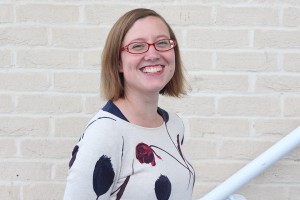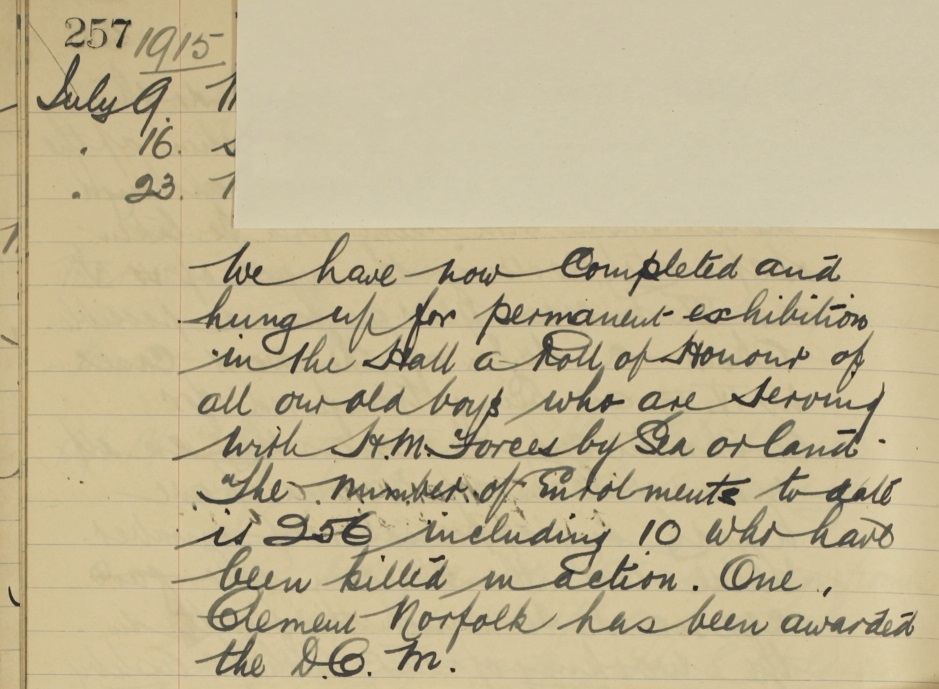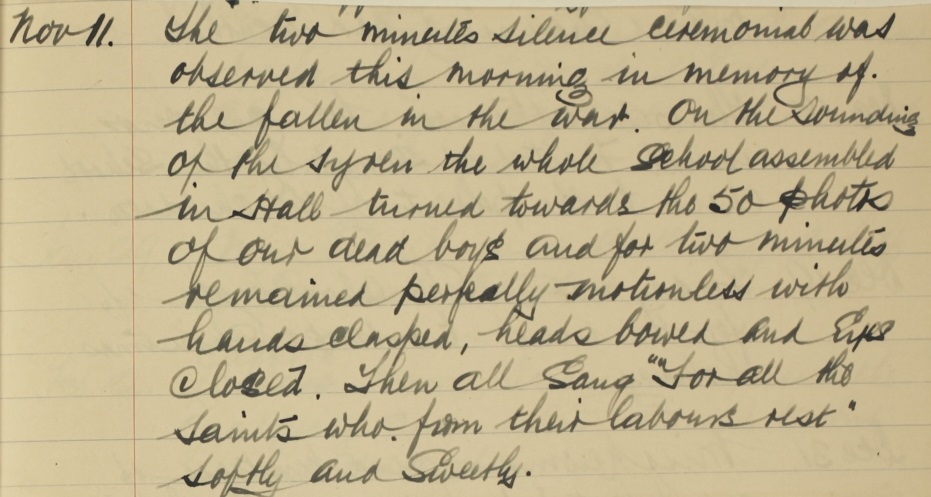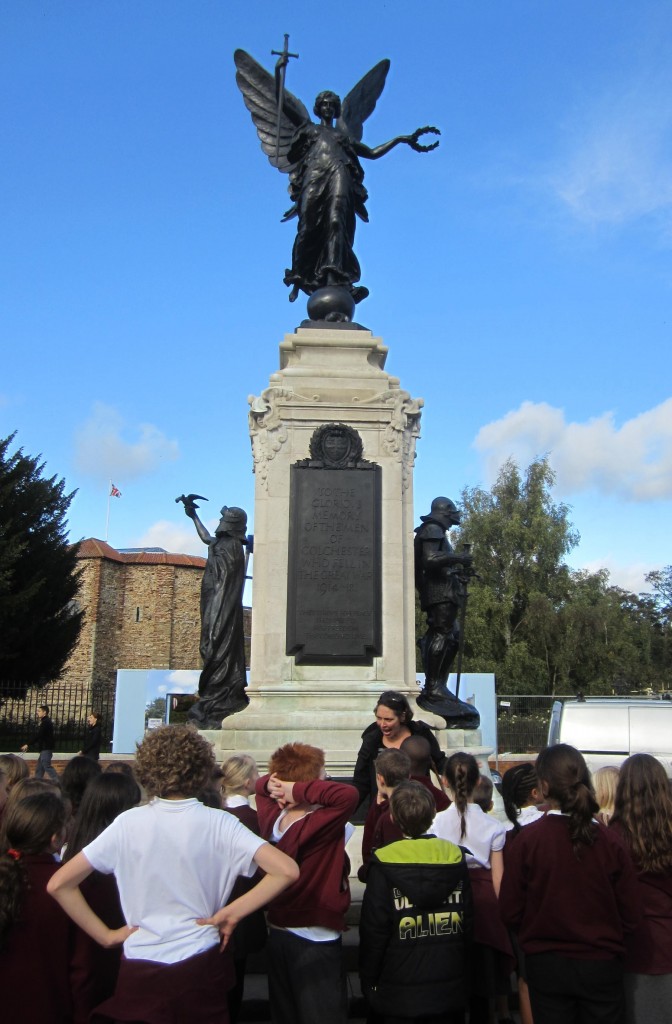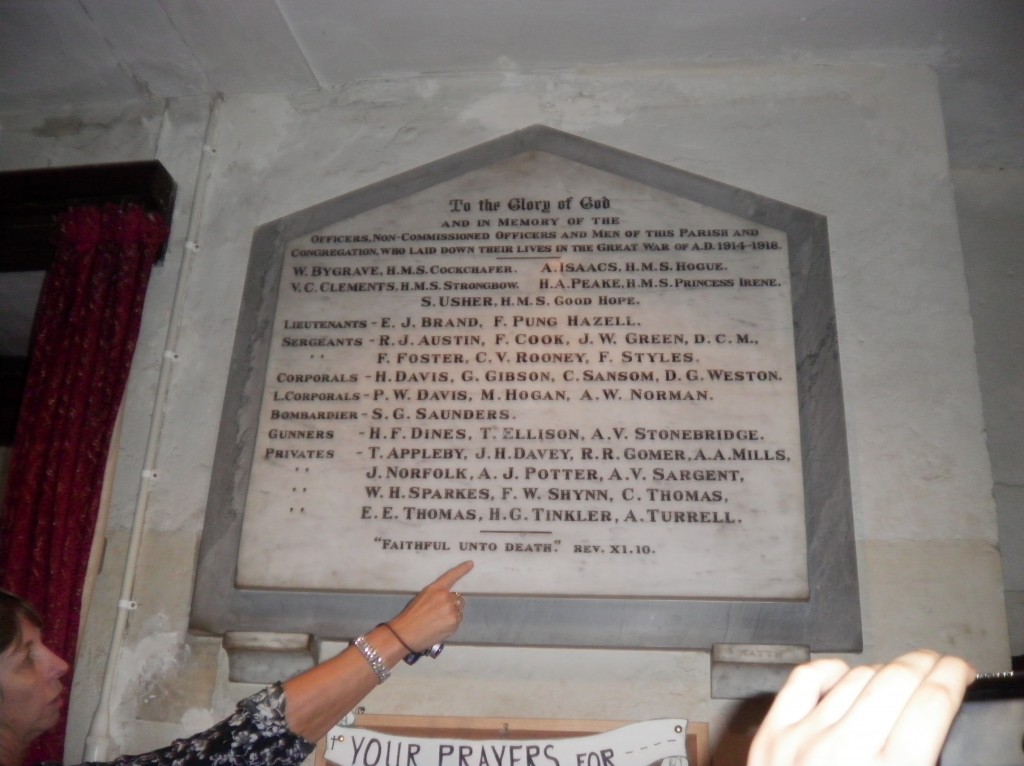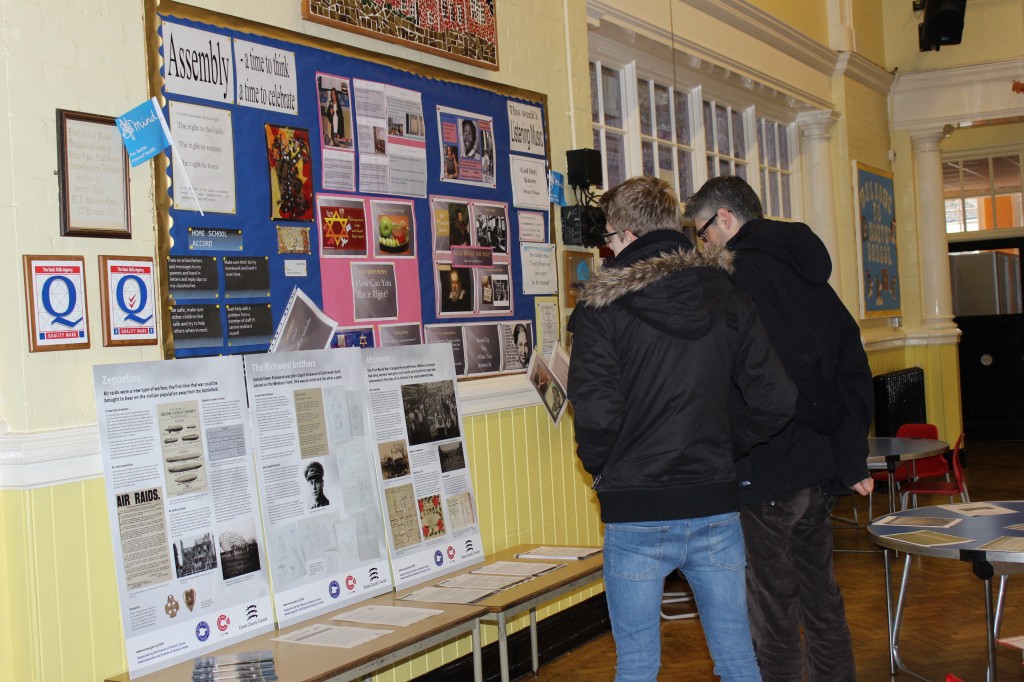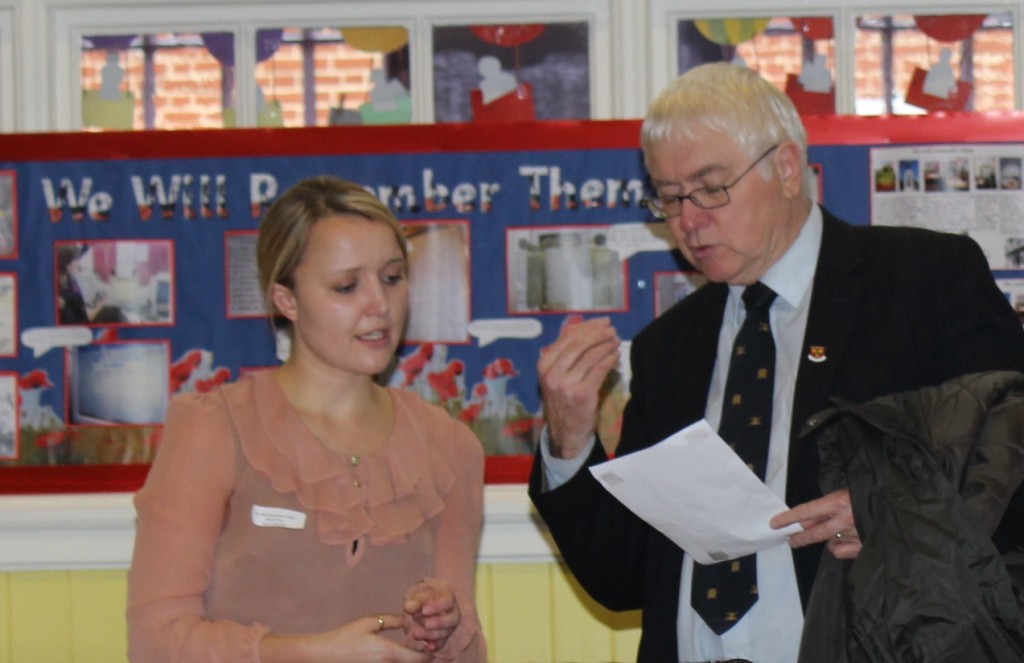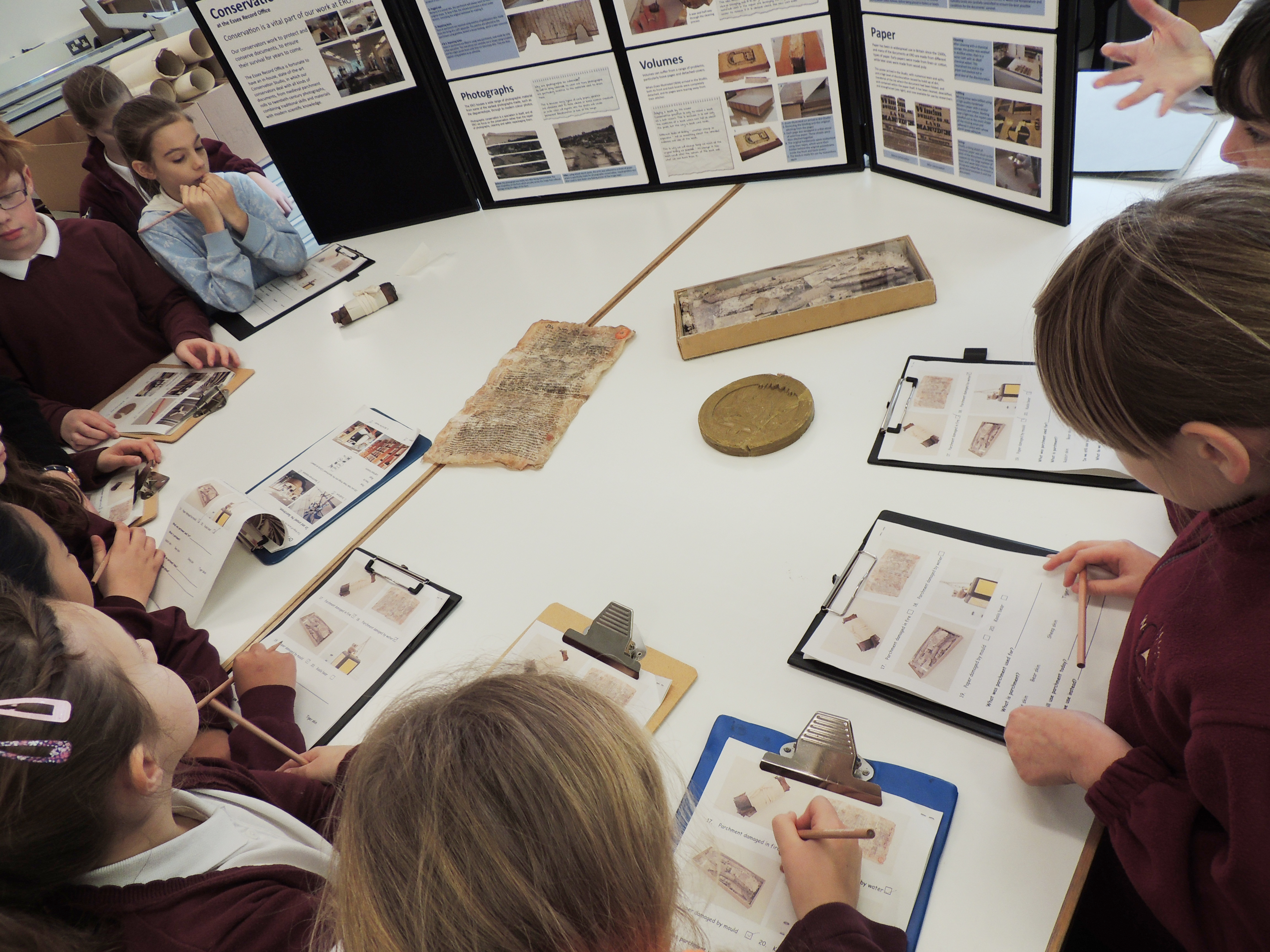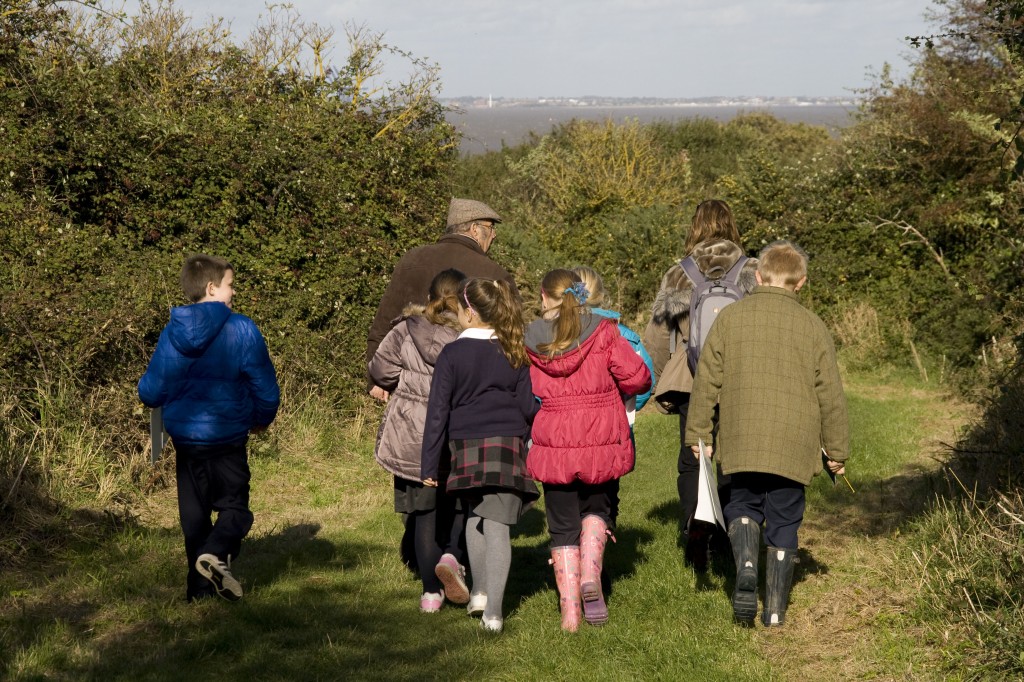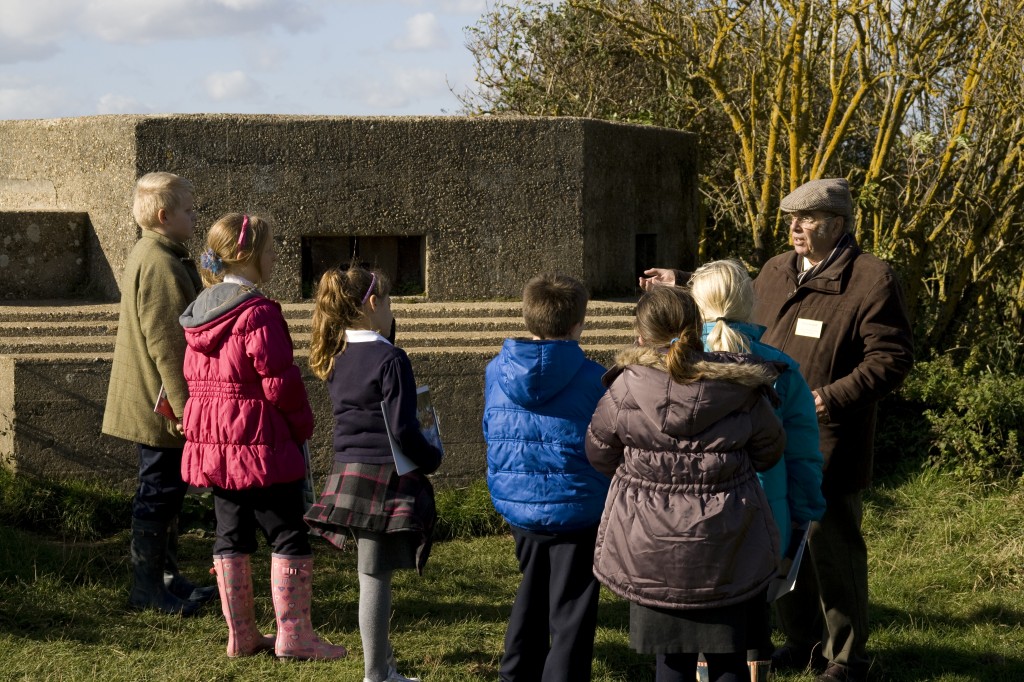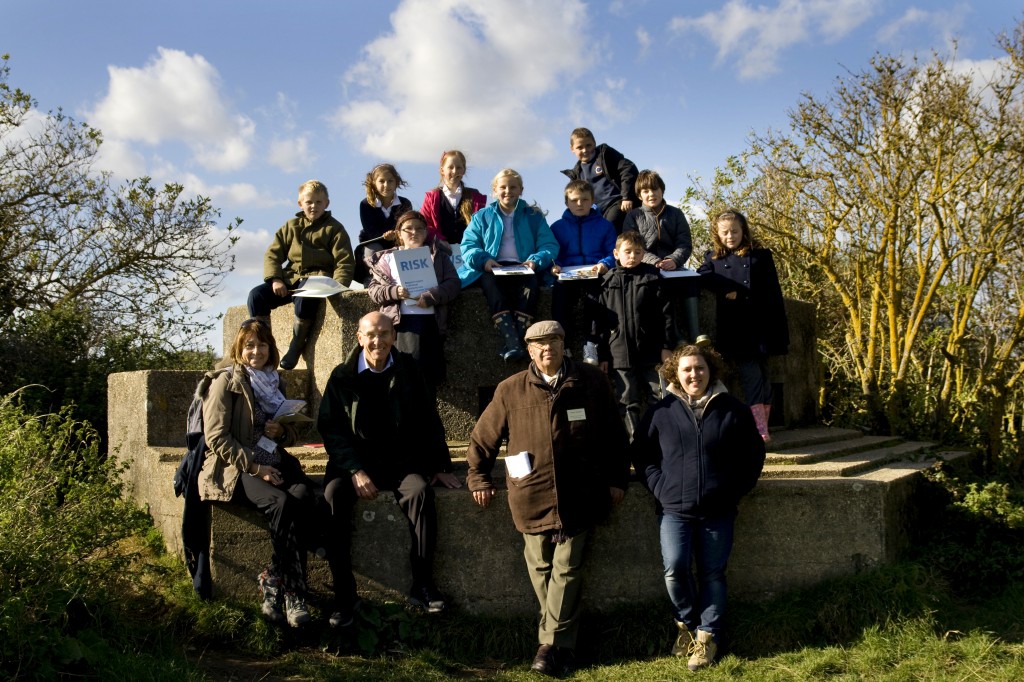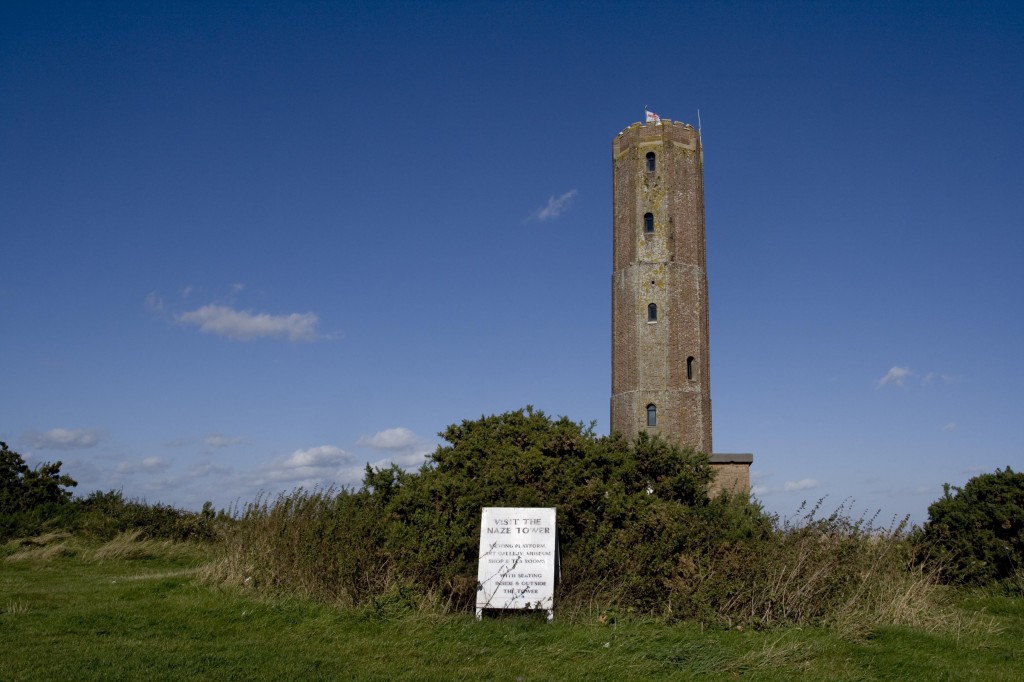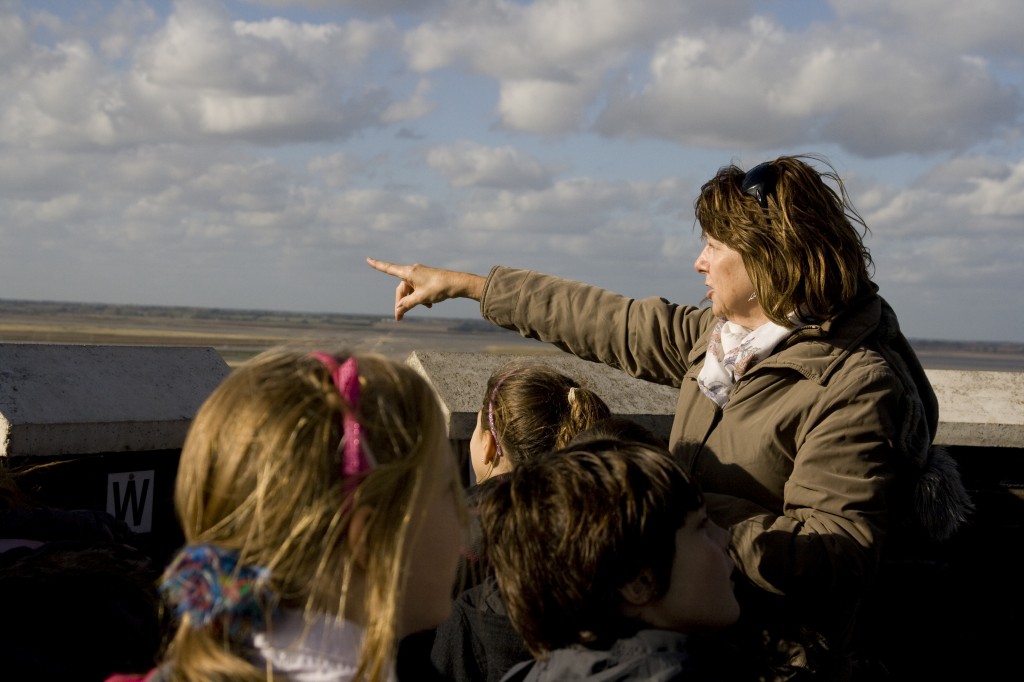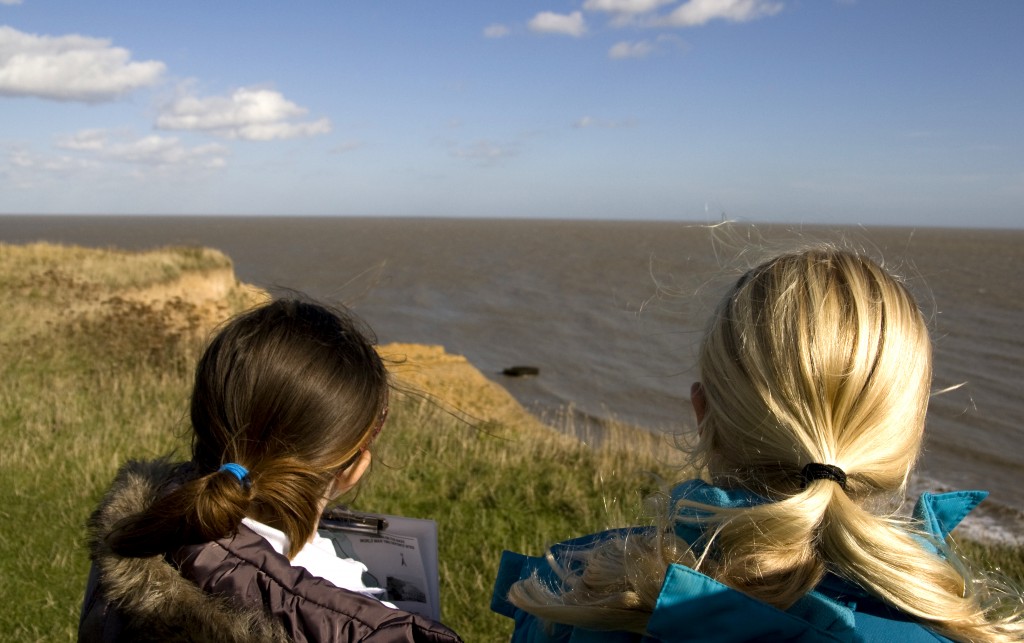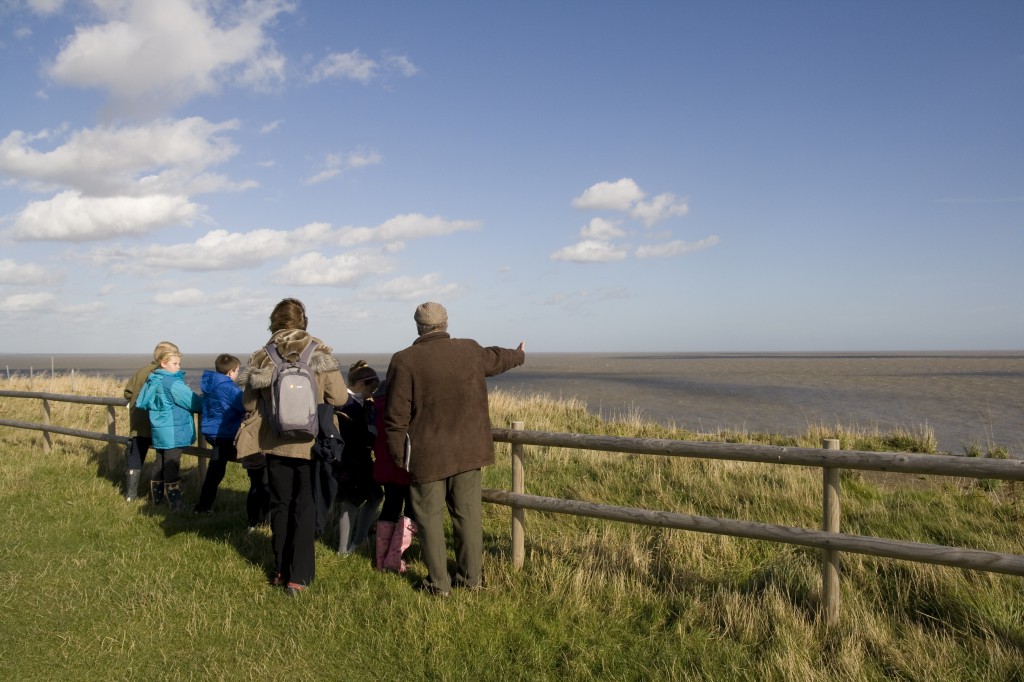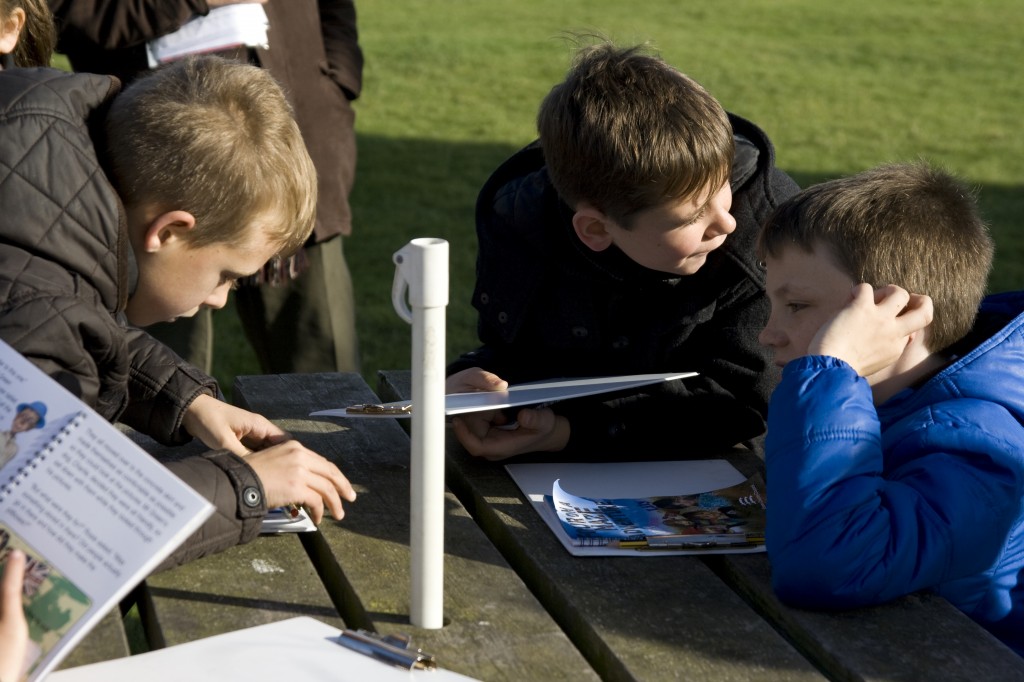Hannah Salisbury, Engagement and Events Manager
Our Document of the Month for May 2018 is an admissions register from the Essex Industrial School for Neglected and Destitute Boys (D/Q 40/1). The volume contains records of boys admitted to the school between 1872 and 1883, giving the reason for their admission and following their school career. For some boys it also records what happened to them after they left the school. Each page reads like a miniature Dickens novel, and the book is full of stories of boys who have been wandering the streets or arrested for petty crimes before being sent to the school.
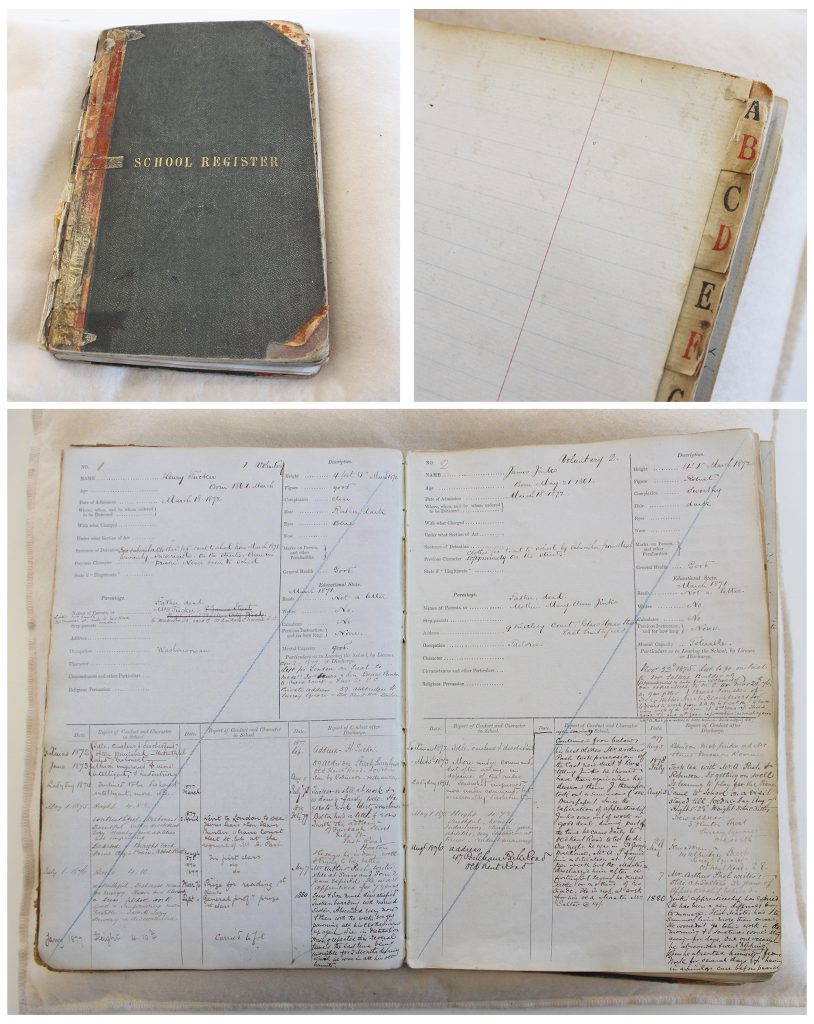
Established in 1872 by local businessman Joseph Brittain Pash, the school started life in two converted houses in Great Baddow, supported entirely by donations. It provided accommodation, clothing, education and practical training for destitute boys, especially orphans or those at risk of falling into crime.
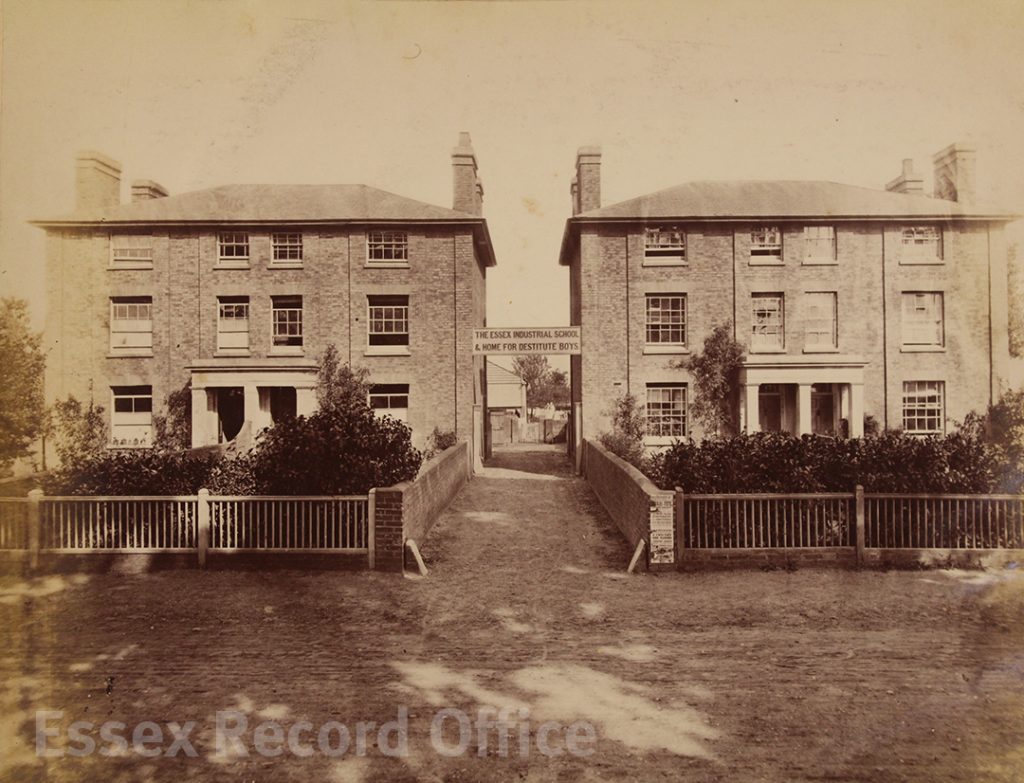
Buildings in Great Baddow used by the school in its early days
The school obviously met a social need, and by 1876 had grown to fill three houses and four cottages. In 1877 it was granted £5,000 by the Essex county authorities and £2,000 by the West Ham School board for a new building. Land was purchased in Rainsford End, Chelmsford, and a new building with space for up to 150 pupils was opened in 1879.
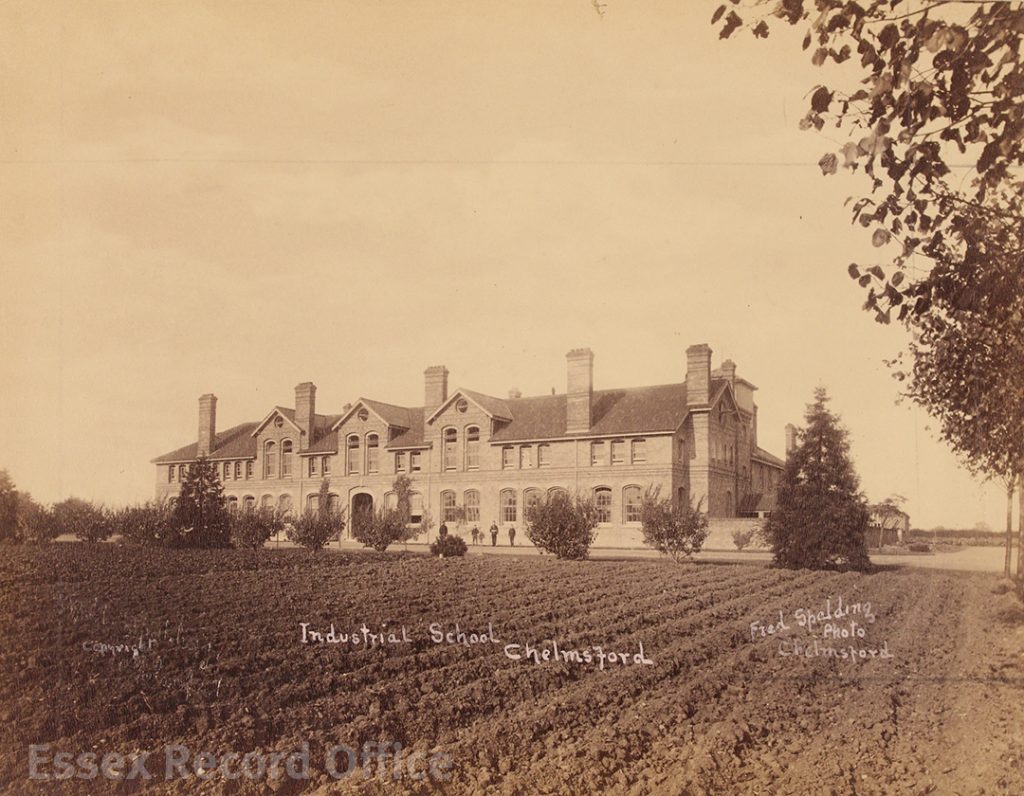
The new school building which opened in Rainsford End, Chelmsford, in 1879
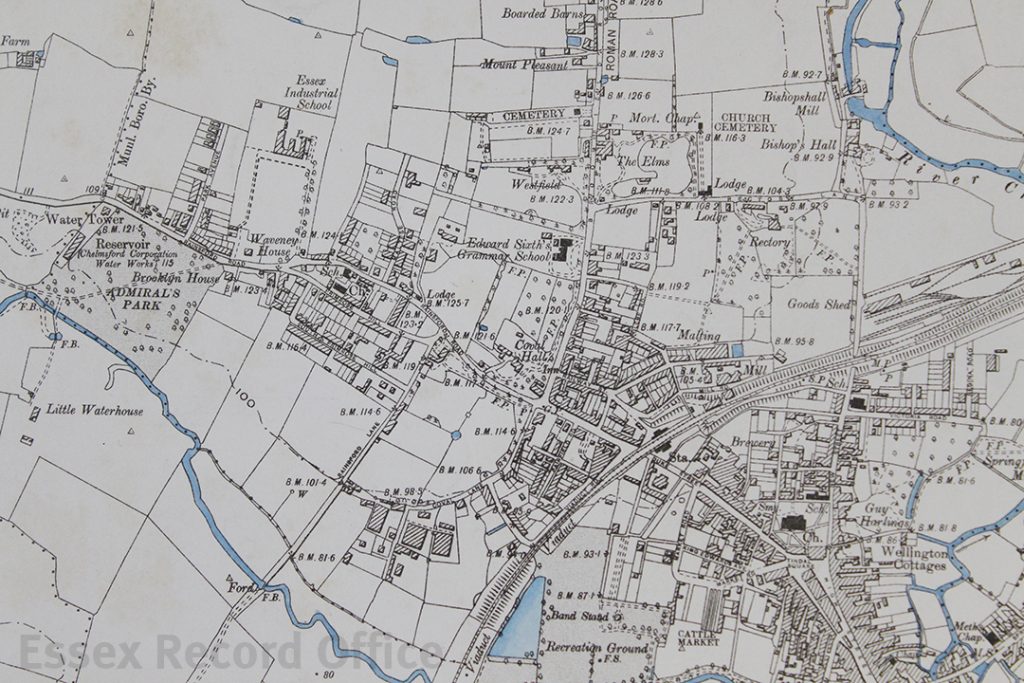
The Essex Industrial School, in the north west quadrant of this map, was built in what was at the time open countryside outside Chelmsford town centre. The building survived until the 1980s when it was demolished and replaced with housing.
Alongside a basic education the boys received training in shoemaking, tailoring, gardening, building, carpentry, painting and decorating, and engineering. The school also had a theatre, a swimming pool, and a fife and drum band. When boys left, attempts were made to find them employment, sometimes in Australia, New Zealand, or Canada.
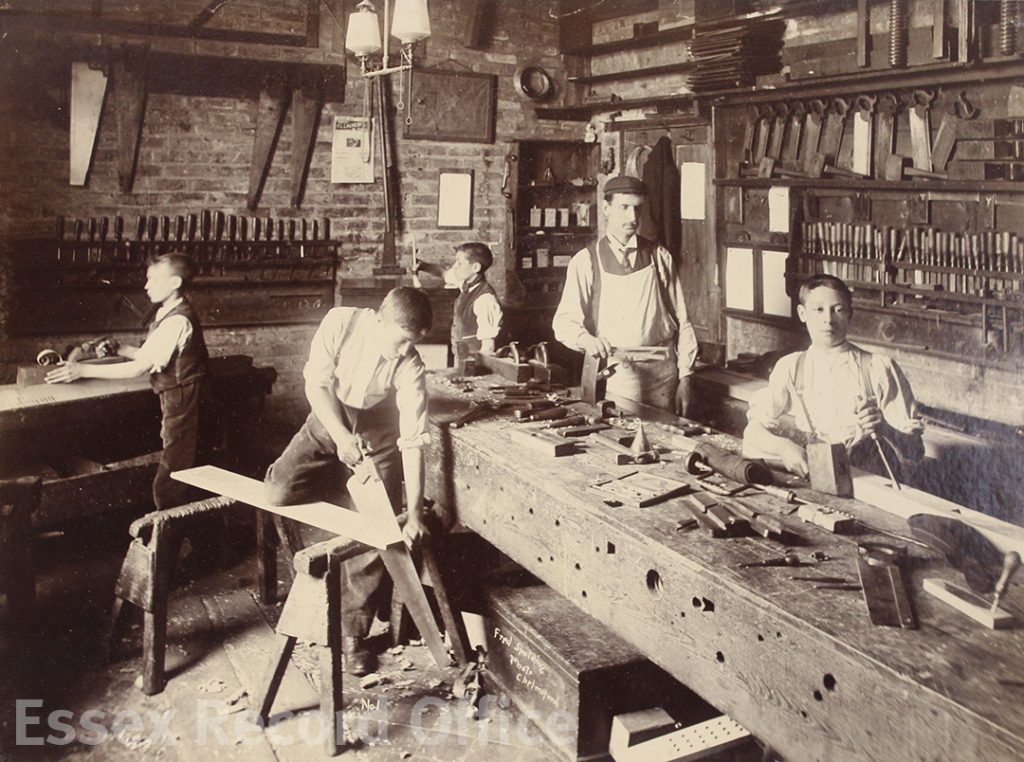
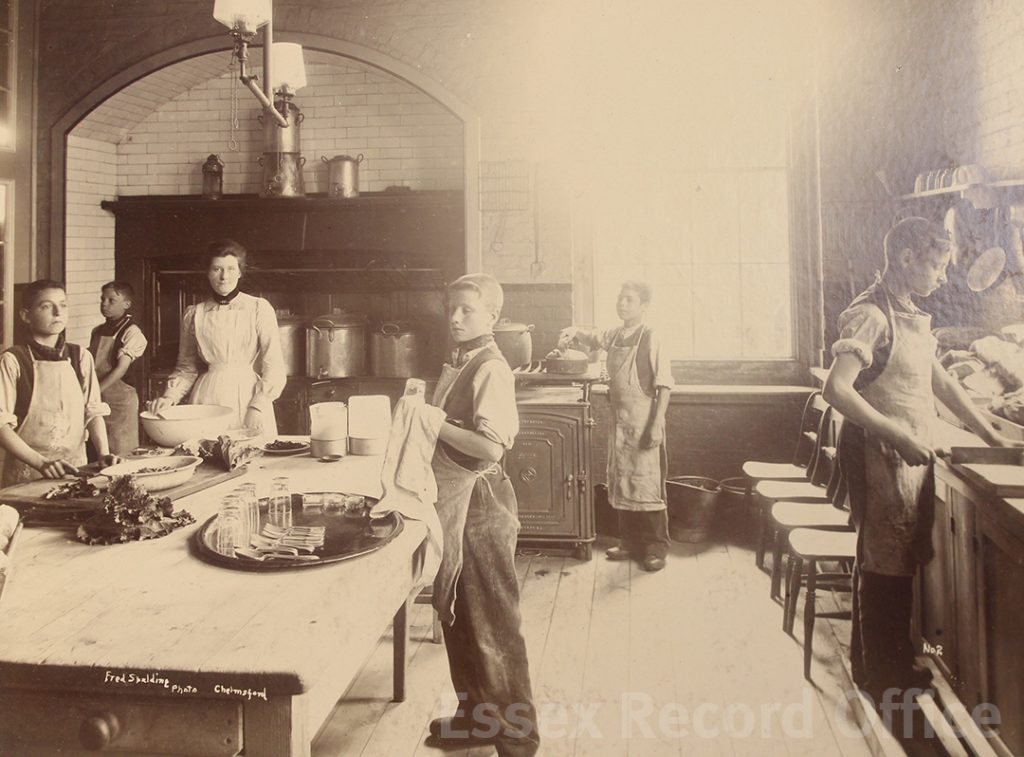
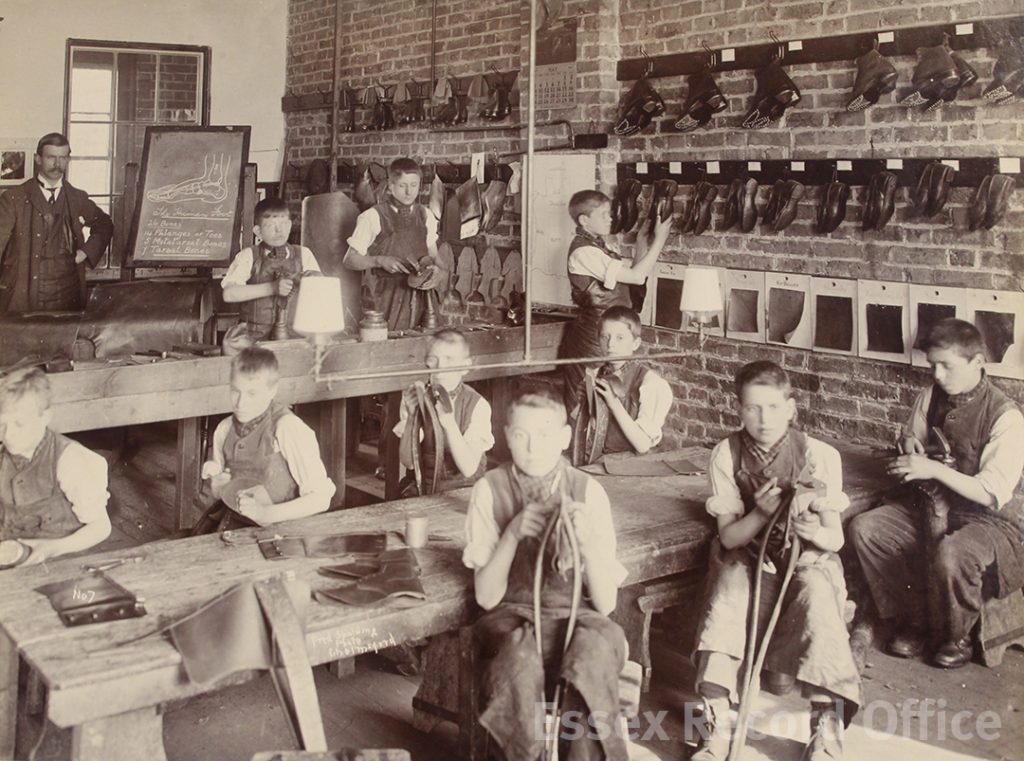
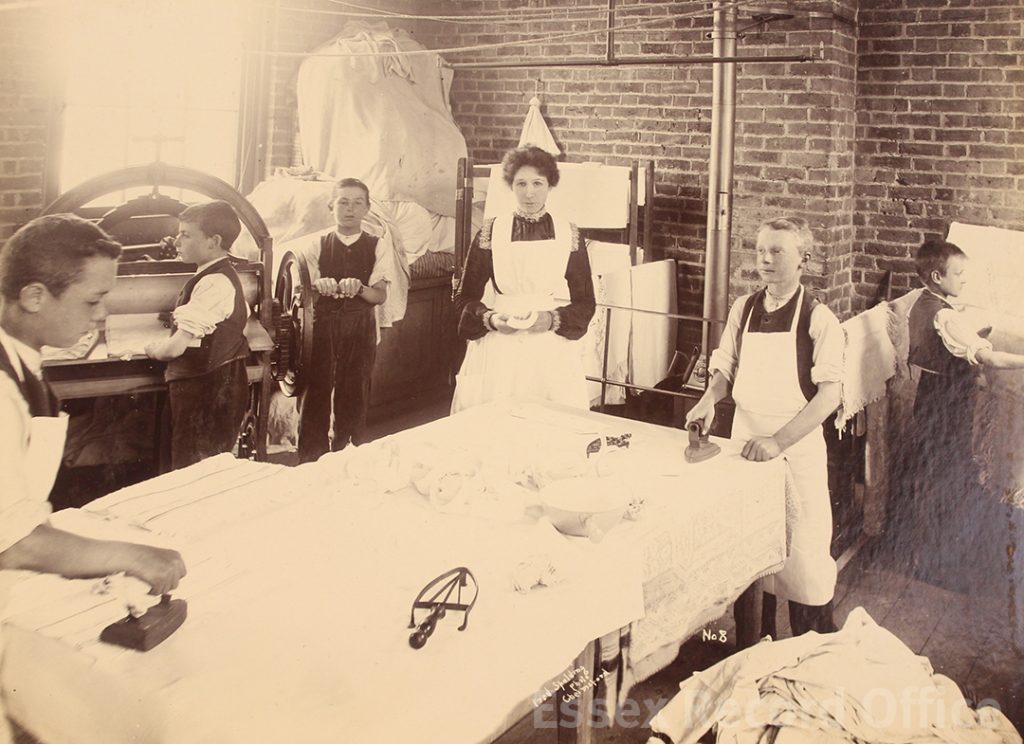
View more photographs from the school on our Historypin page
The school admission register and photographs of the school’s buildings, classrooms and workshops are wonderful enough, but we also have some further photographs which make the whole collection even more special.
The school sometimes commissioned individual portrait photographs of their pupils, and a little bundle of these survived today at ERO, most of which are named. These names can then be looked up in the admissions registers, and the photographs of the boys can be tied up with their stories told in the school records. Some of the photographs were taken after the boys had been at the school for a while, but others were taken when the boys first arrived. Often they were unshod and wearing rags, and had clearly suffered extreme deprivation.
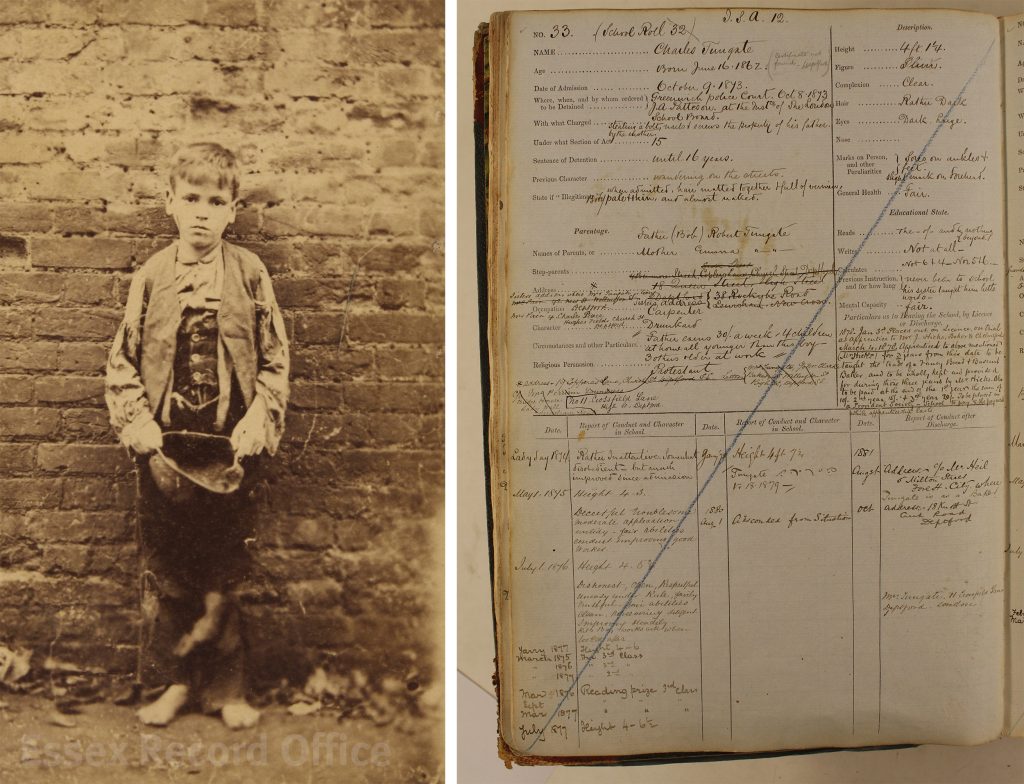
Photograph of 11-year-old Charles Tungate, who was admitted to the school in 1873, along with his page in the admission register.
Charles Tungate was admitted to the school in October 1873, aged 11. His attendance at the school had been ordered by Greenwich Police Court, following his arrest for stealing a bolt, nails and screws which belonged to his father (his mother had reported this crime). He was sentenced to be detained at the school until he was 16 years of age.
The admission register gives a remarkable amount of detail about Charles’s situation. His parents were Robert and Emma Tungate of Deptford. Robert was a carpenter, but is also described as a drunkard. Charles was one of their eight children; three older children were out at work, but four children younger than Charles were at home. Clearly the family was struggling. Charles had been ‘wandering the streets’, and when admitted, his hair was ‘matted together & full of vermin’ and his body was ‘pale & thin, and almost naked’, and he had sores on his ankles and feet. He had never been to school, but his sister had managed to teach him to read a little.
After 11 months at the school, Charles was described as ‘Rather inattentive, somewhat disobedient, but much improved since admission’. Charles’s school reports are something of a mixed bag – he is described as being ‘deceitful’ and ‘untidy’, but also as ‘persevering’ and ‘diligent’. He left the school in 1878 and was apprenticed to a Chelmsford baker, Mr Hicks, ‘to be taught the trade of a Fancy Bread & Biscuit Baker’. Charles lasted two of his three years as an apprentice, before absconding in August 1880. In 1881, however, he had found another position in London as a baker. Baking seems ultimately to have proved not to be for Charles, and in 1884 he joined the army. He served in India and in South Africa, where he suffered a gunshot wound to both legs during the Boer War. By the time of the 1911 census, Charles was living in Warley, and was an army pensioner and grocer. He was married with four children. He died in 1940, aged 75.
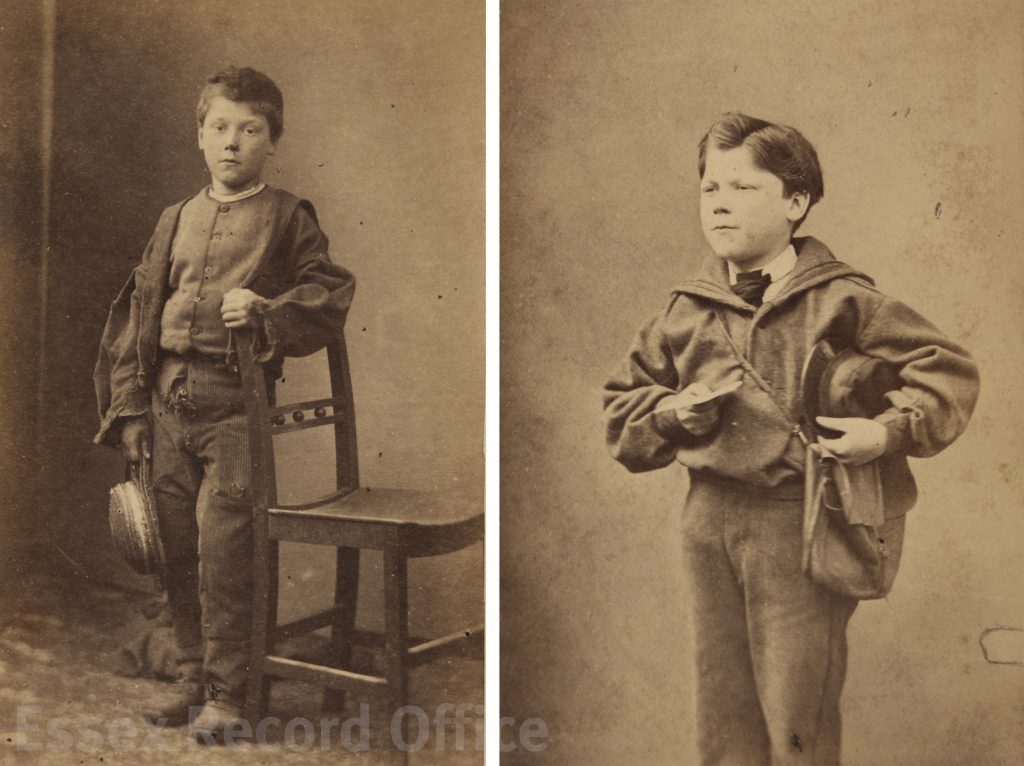
There are two photographs which are labelled ‘G Newman’; the jury is out on whether they are before and after photographs of the same boy or if more than one G Newman attended the school.
George Newman was admitted in 1874 aged 10, having been ‘wandering around with his mother until she became insane’. His father was dead, and his mother was placed in the Essex Lunatic Asylum in May 1874. He stayed at the school until 1880, and wrote in December that year that he had got a job at one of the very first Sainsbury’s shops in London. Sadly when he visited the school in August 1881 he was out of work, and nothing further is reported of him.
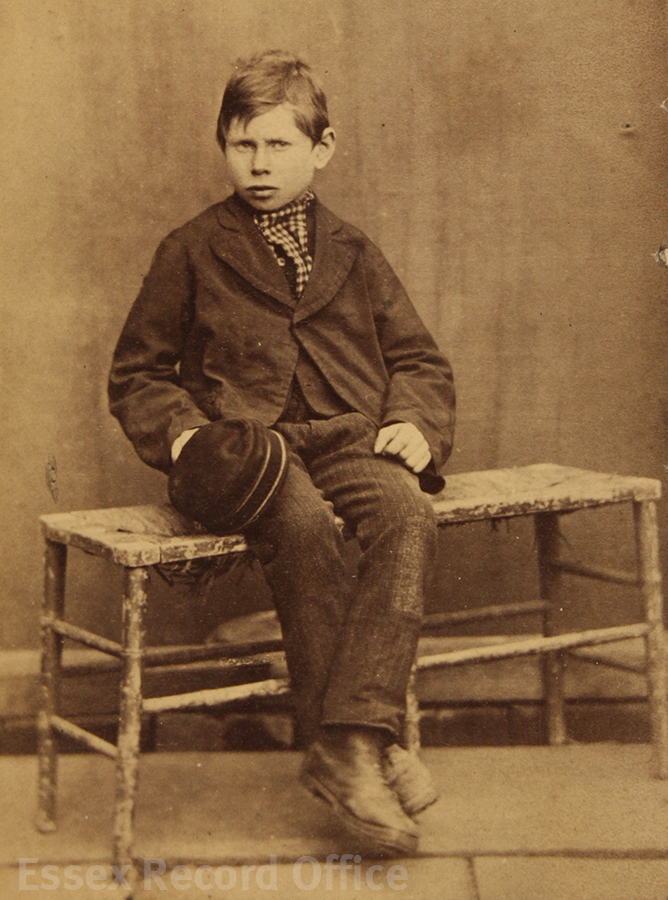
William Swainston, who joined the school in 1876, aged 11, having run been orphaned and run away from his uncle. Photo by Edouard Nickels (D/Q 40/153)
William Swainston was admitted in 1876, aged 11, having been found sleeping rough in an outhouse at Parson’s Heath near Colchester. He was an orphan, and had been living with his uncle, but stated he had run away from his uncle because he was afraid of him. A newspaper article fixed to his school record says that ‘He had been wondering about the locality for a fortnight previously, and witness [a local policeman] had received several complaints respecting him… The witness added that when found the boy was in a filthy condition, and Mr. Charles Harvey, the gaoler, said he had never before in his life had a boy in such a dirty state in custody’. He was described on arrival at the school as ‘a quick boy’ and ‘intelligent’, and unusually he could read and write. In 1881 a position was found for him in Canada, and he wrote to the school to tell them he was doing well. Canadian records show that he married an Irishwoman, and settled in Toronto.
The school was later known as the Essex Home School, and continued in various forms until 1980. The buildings have since been demolished and the site redeveloped.
The admission register, along with photographs of some of the pupils of the school, will be on display in the ERO Searchroom throughout May 2018.

